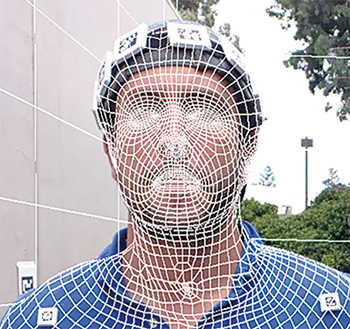Tip #1366: The New AI Frontier of VFX
… for Visual Effects
Tip #1366: The New AI Frontier of VFX
Larry Jordan – LarryJordan.com
Machine learning is accelerating all sorts of slow processes in visual effects.


This article, written by Ian Failes, first appeared in PremiumBeat.com. This is a summary.
If there’s a buzz phrase right now in visual effects, it’s “machine learning.” In fact, there are three: machine learning, deep learning and artificial intelligence (A.I.). Each phrase tends to be used interchangeably to mean the new wave of smart software solutions in VFX, computer graphics and animation that lean on A.I. techniques.
VFX Voice asked several key players – from studios to software companies and researchers – about the areas of the industry that will likely be impacted by this new world of A.I.
What exactly is machine or deep learning? An authority on the subject is Hao Li, a researcher and the CEO and co-founder of Pinscreen, which is developing ‘instant’ 3D avatars via mobile applications with the help of machine learning techniques. He describes machine learning (of which deep learning is a subset) as the use of “computational frameworks that are based on artificial neural networks which can be trained to perform highly complex tasks when a lot of training data exists.”
Since many graphics-related challenges are directly connected to vision-related ones – such as motion capture, performance-driven 3D facial animation, 3D scanning and others – it has become obvious that many existing techniques would immediately benefit from deep learning-based techniques once sufficient training data can be obtained.
The use of machine and deep learning techniques in the creation of CG creatures and materials is still relatively new, but incredibly promising, which is why several companies have been dipping their toes in the area. Ziva Dynamics, which offers physically-based simulation software called Ziva VFX, has been exploring machine learning, particularly in relation to its real-time solver technology.
“This technology,” explains Ziva Dynamics co-CEO and co-founder James Jacobs, “makes it possible to convert high-quality offline simulations, crafted by technical directors using Ziva VFX, into performant real-time characters. We’ve deployed this tech in a few public demonstrations and engaged in confidential prototyping with several leading companies in different sectors to explore use cases and future product strategies.”
One of the promises of deep and machine learning is as an aid to artists with tasks that are presently labor-intensive. One of those tasks familiar to visual effects artists, of course, is rotoscoping. Kognat, a company started by Rising Sun Pictures pipeline software developer Sam Hodge, has made its Rotobot deep learning rotoscope and compositing tool available for use with NUKE.
Hodge’s adoption of deep learning techniques, and intense ‘training,’ enables Rotobot to isolate all of the pixels that belong to a certain class into a single mask, called segmentation. The effect is the isolation of portions of the image, just like rotoscoping. “Then there is instance segmentation,” adds Hodge, “which can isolate the pixels of a single instance of a class into its own layer. A class could be ‘person,’ so with segmentation you get all of the people on one layer. With instance segmentation you can isolate a single person from a crowd.
Digital Domain’s Darren Hendler summarizes that “machine learning is making big inroads in accelerating all sorts of slow processes in visual effects. …In the future, I really see all these machine learning capabilities as additional tools for VFX artists to refocus their talents on the nuances for even better end results.”
EXTRA CREDIT
The source article has lots more detail, illustrations and links.


Leave a Reply
Want to join the discussion?Feel free to contribute!